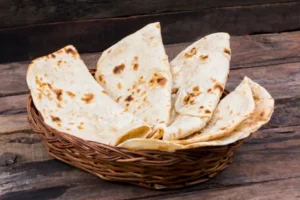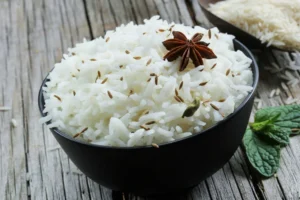Roti vs. Rice: Which is the Best for Health and Weight Loss?
Introduction
Roti and rice are staple foods in many cultures, particularly in South Asia. Both are sources of carbohydrates and provide essential nutrients, but when it comes to health and weight loss, many people wonder which is the better option. This article provides a detailed comparison of roti and rice based on their nutritional values, health benefits, and impact on weight loss.
Nutritional Comparison of Roti and Rice
To determine which is better for health and weight loss, we first need to understand their nutritional compositions.
Calories and Macronutrients
Nutrient | 1 Roti (40g) | 1 Cup Cooked Rice (150g) |
Calories | ~120 kcal | ~200 kcal |
Carbohydrates | ~18g | ~45g |
Protein | ~3g | ~4g |
Fiber | ~2g | ~0.6g |
Fat | ~2g | ~0.3g |
Micronutrient Content
Roti: Rich in fiber, iron, magnesium, and B vitamins due to its whole wheat content.
Rice: White rice is stripped of most fiber and nutrients during processing, but brown rice contains more fiber, magnesium, and some essential vitamins.
Glycemic Index (GI) Comparison
Roti GI: 45-55 (low to moderate)
White Rice GI: 70-90 (high)
Brown Rice GI: 50-60 (moderate)
Since lower GI foods lead to slower blood sugar spikes, roti, particularly whole wheat roti, is a better option for diabetics and those looking to manage blood sugar levels.
Health Benefits of Roti vs. Rice
Benefits of Roti

High in Fiber: Whole wheat roti contains more fiber than white rice, aiding digestion and promoting satiety.
Better Blood Sugar Control: With a lower glycemic index than white rice, roti causes a slower rise in blood sugar levels.
Rich in Essential Nutrients: Roti contains iron, magnesium, and B vitamins essential for energy metabolism.
Helps in Weight Loss: The fiber in roti promotes fullness, reducing calorie intake and aiding weight loss.
Benefits of Rice

Easier to Digest: Rice, especially white rice, is light on the stomach and easier to digest, making it suitable for those with digestive issues.
Gluten-Free: Rice is a great option for people with gluten sensitivity or celiac disease.
Good Source of Energy: Rice provides quick energy, which can be beneficial for athletes or those needing immediate energy replenishment.
Brown Rice Benefits: Brown rice has more fiber, antioxidants, and essential nutrients compared to white rice, making it a healthier option.
Which is Better for Weight Loss?
Weight loss is primarily influenced by caloric intake and macronutrient balance. Here’s how roti and rice compare for weight management:
Caloric Density: Roti has fewer calories per gram than rice, making it a better choice for portion control.
Satiety: Roti, due to its fiber content, keeps you full longer, reducing overall food intake.
Blood Sugar Regulation: Lower GI foods like roti help prevent insulin spikes that contribute to fat storage.
Portion Control: Rice is easy to overeat, especially since it expands in water and can seem light, leading to higher calorie consumption.
When Should You Choose Rice Over Roti?
While roti is often seen as the better option for weight loss and health, there are scenarios where rice might be the preferable choice:
For Quick Energy Needs: If you need a fast-digesting source of energy, rice can be a better option.
If You Have Digestive Issues: People with IBS or weak digestion may find rice easier on the stomach.
For Gluten-Free Diets: Since wheat contains gluten, those with gluten intolerance should choose rice.
How to Make Roti and Rice Healthier
Regardless of your choice, here are some ways to make both options healthier:
For Roti:
Choose whole wheat, multigrain, or millet-based rotis for added fiber and nutrients.
Avoid adding excess ghee or butter.
Pair with protein-rich foods like lentils, paneer, or chicken to balance the meal.
For Rice:
Opt for brown rice or hand-pounded rice instead of white rice.
Cook rice with extra water and drain excess starch to lower the glycemic load.
Pair rice with fiber-rich vegetables and proteins to slow down digestion.
Conclusion
Both roti and rice have their own set of benefits and drawbacks. If your goal is weight loss and better blood sugar control, roti is generally the better choice due to its fiber content, lower glycemic index, and higher satiety factor. However, for those with digestive issues, gluten intolerance, or high energy needs, rice—especially brown rice—can still be a healthy option when eaten in moderation. Ultimately, the best choice depends on your personal health goals, dietary needs, and portion control.

